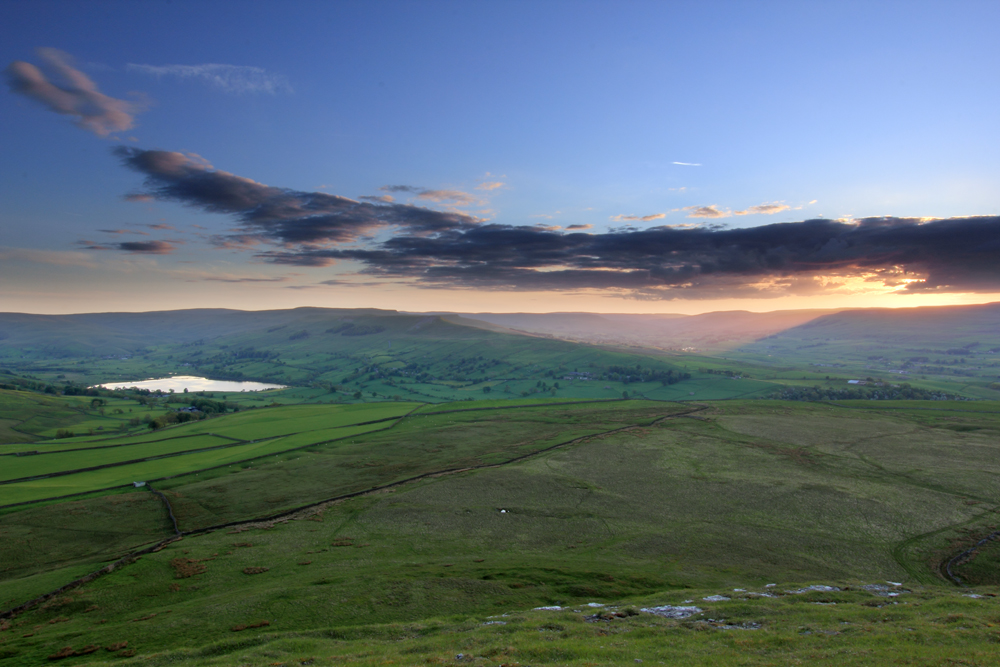
 Roy Lingard – Head Forester, Bolton Abbey and Chatsworth Estates
Roy Lingard – Head Forester, Bolton Abbey and Chatsworth Estates
The reason I love this place is that you can go and stand by the waterfall and you can’t see any of the modern landscape. You can go down there and imagine yourself back in a sort of a wild wood – it’s all nice gnarled, old trees. It’s just fantastic. The Valley of Desolation got its name after a storm in 1836. It devastated the area, hence the name; before that it was called Posforth Gill I think.
Apart from it being a beautiful place, I was asked to plant the area in 1996/1997. We wanted to try to restore some of the ancient woodlands that have been lost over many centuries, and the trees are also shelter for farm stock as well.
At that time everyone was harping on about the traditional Dales landscape, which is a complete myth. The landscape of stone barns, stone walls, open areas, a farmed hay meadow landscape, only started to evolve in about the 1750s. If you go back to 8 – 5,000BC it would all have been mostly wooded. I did quite a lot of research on how the landscape’s evolved since the last Ice Age, and I thought it would be a good idea to plant the different phases of woodland development since the last Ice Age.
I wanted to make an educational walk. The area we’ve planted is along a very linear route: from Bolton Abbey village straight through the Valley of Desolation, you pass two waterfalls, and then go onto the moors. It’s also interesting geologically. So as well as the individual tree evolution, we’ve done a trail that illustrates how the Ice Age shaped the landscape. We’ve planted different areas: starting off at the Arctic tundra phase; then through the Boreal phase and Atlantic phase; we’ve got an area showing the woodland as it might have been today if we hadn’t chopped it all down; and an area with native-type woodland. It’s a long term project and it’s still evolving. My intention is to have the whole story from Arctic tundra through to modern forestry, and to explode this myth that the Dales landscape has always been as it is now and always should be.
I’m Head Forester for Bolton Abbey and Chatsworth Estates and keep an overview of both estates. We’ve got a commercial woodland here where we sell timber. We’ve also got areas of continuous cover, like Strid Wood, which are managed primarily for conservation. It’s quite a varied and interesting job. I’ve been here 28/29 years now. I started off as a woodman, and then I got sent to college part time over a five year period. I took over from my predecessor here about 16 years ago.
We are starting to plant more woodlands in the UK, which is overdue, but we still need to plant a lot more. It’s a resource from my point of view – over 80% of our timber needs are imported from abroad. We’re too reliant on imports. We’ve got a really good tree growing climate here and we could do a lot more. I think it would be nice to get some of our woodlands back to where they used to be, for habitat reasons, conservation reasons, but also for economic requirements.
You’ve got to think in decades in forestry, even centuries. In Strid Wood we’re planning what we want the woodland to be like in 200 years time. The beauty of working on a private estate is that we think on a long term landscape level. We all think of ourselves as stewards now for the next generation, and we’re taking over from previous ones. We’ve got forest records going back to 1810, so you’ve got that continuity. You get the whole picture and you can put these long term things in place. It’s not a job where you can go for three or four years and then move on; it’s a way of life that you embrace or you don’t.


















